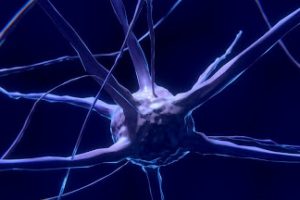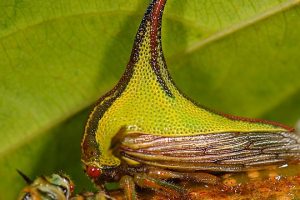
© Shutterstock
Unveiling the intricacies of nature’s unique mark, unravelling the mysterious design of our fingertips.
Musa Sattar, London, UK – Deputy Science Editor
Look closely at your fingertips, and observe their awe-inspiring complexity.
In the intricate tapestry of nature’s design, the human fingerprint stands as an impeccable masterpiece. A silent storyteller etched upon the canvas of our skin, this tiny marvel conceals an entire universe within its delicate whorls and arches. Delve deeper, and you’ll find a narrative woven with flawlessness, uniqueness, and the enigmatic touch of creation.
At first glance, one might question why these patterns exist and what makes them so distinct. To understand their purpose, we venture into the science of dermatoglyphics – the study of the features and characteristics of the prints and volar surfaces of the hands and feet—where biology and brilliance converge.
Our fingerprints start their journey long before we’re born. Imagine a time-lapse of human development in the womb, a mesmerising dance of growth where, around the 10th week, tiny indentations start to form on the fingertips. These embryonic movements leave behind a faint trail that gradually evolves into the intricate fingerprints we come to recognise.
Environmental influences shape these patterns, adding to their distinctiveness. Factors like blood circulation, the amount of amniotic fluid, and pressure experienced in the womb all contribute to the unique characteristics seen in our fingerprints.
But why? Nature often crafts with precision, and fingerprints serve as nature’s unique identity seal. They aid in gripping objects, enhancing tactile sensitivity, and regulating surface area for friction, giving us a grasp that’s both delicate and firm. But the wonders don’t end there.
What truly captivates is their unparalleled uniqueness. The forensic world hinges on the uniqueness of fingerprints for identification. No two individuals, past or present, have been found to possess identical fingerprints, not even those of identical twins. Moreover, each fingerprint differs across multiple fingers of an individual’s hand.
The odds of two individuals sharing the same fingerprints are approximately 1 in 64 billion, highlighting nature’s infinite creativity.
Dive deeper into the microscopic landscape of fingerprints, and you’ll encounter an astonishing world. The ridges on our fingertips aren’t random patterns; they’re a labyrinth of intricate designs. Loops, whorls, and arches interlace in an arrangement so singular that even advanced technology struggles to replicate their exactness.
There’s diversity even within this uniqueness. The arch pattern, a simple yet elegant curve, is found in only about 5% of fingerprints. Loops, forming graceful waves, make up about 65% of patterns, while whorls – intricate spirals – grace roughly 30%. These patterns are further classified into subtypes based on their minutest details.
Nature’s perfection doesn’t stop there. Have you heard of the Galton details? Named after Sir Francis Galton, the pioneer of fingerprint analysis, these minute features within fingerprints – such as ridge endings, bifurcations, and dots – are akin to celestial points, making each print unequivocally unique.
Interestingly, about 1% to 5% belong to accidental patterns, challenging forensic experts with unconventional ridge formations that don’t fit the typical classifications. Each accidental print tells a unique story, making these rare patterns a captivating outlier in the realm of fingerprints.
But what makes these patterns so complex? At the microscopic level, these ridges aren’t uniform; they feature pores and sweat ducts in an astonishingly intricate arrangement. Picture them as tiny canals, weaving and intersecting in an elaborate network. It’s this microscopic maze that makes replicating fingerprints an arduous task, even for advanced technology.
Unveiling the complexity of fingerprints doesn’t only lie in their structure but in their resilience. They endure throughout a person’s life, evolving slightly but retaining their core features. Even injuries or skin damage don’t alter their fundamental patterns, making them an unyielding testament to individuality.
Beyond their forensic significance, fingerprints possess whimsical quirks that captivate the imagination. Did you know that koalas have fingerprints similar to humans? Yet another marvel in the mosaic of nature’s design!
Despite advancements, mimicking fingerprints remains an elusive feat for technology. The intricate network of ridges, pores, and sweat ducts creates a microscopic maze too complex to replicate accurately. Biometric systems based on fingerprint recognition strive to replicate nature’s precision but often fall short.
From forensic investigations to the seamless touch of our devices, the fingerprint continues to unveil its versatility, showcasing its prowess in both the realms of science and everyday life.
The formation of our fingerprints appears too complex to result from random chance. Experienced scientists who are equipped with advanced laboratory materials and controlled conditions designed to replicate such a phenomenon, have still failed to do so. Surprisingly, these fingerprints develop naturally, defying controlled conditions. However, acknowledging the existence of God reconciles these perplexities.
Further Reading:
- https://stuyspec.com/article/understanding-how-fingerprint-patterns-are-formed
- https://www.smithsonianmag.com/science-nature/myth-fingerprints-180971640/
- https://www.science.org/content/article/why-don-t-identical-twins-have-same-fingerprints-new-study-provides-clues
- https://www.sciencedirect.com/science/article/abs/pii/S0022519304006198
- Harold Cummins and Charles Midlo. Finger Prints, Palms and Soles: An Introduction to Dermatoglyphics. (New York: Dover Publications, 1961).




Add Comment